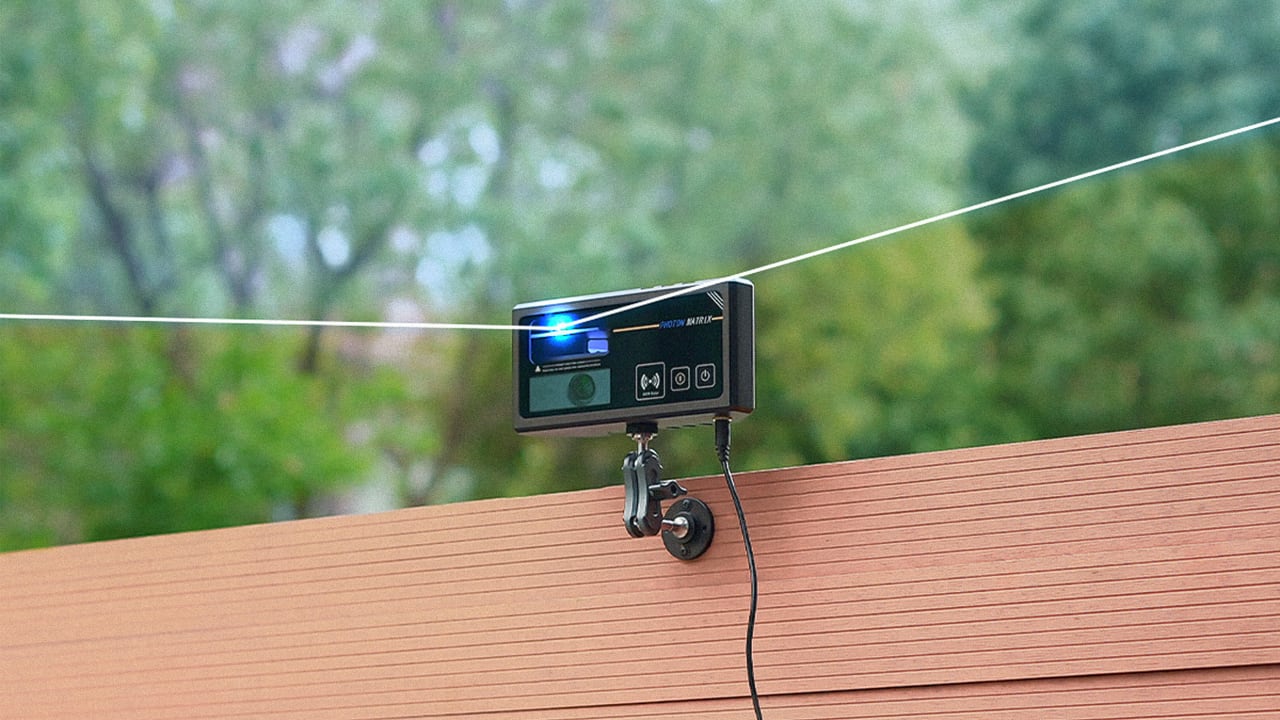This ‘Iron Dome’ for mosquitoes shoots down bugs with lasers

You can now order an “Iron Dome” for mosquitoes. Its name is the Photon Matrix, a black box about the size of a smartphone that can detect, track, and eliminate mosquitoes mid-flight using an AI-guided laser system.
According to its inventor, it can identify and zap up to 30 mosquitoes per second with calibrated laser pulses that will disintegrate these potentially lethal—and always annoying—flying pests without harming people or pets. Just looking at the video of it in action makes me laugh like a supervillain.
Chinese engineer Jim Wong built a working prototype that can “effectively identify and strike mosquitoes with a flight speed of no more than 1 meter per second and a characteristic size of 2 to 20 millimeters,” according to his Indiegogo crowdfunding page and the viral videos on TikTok and Instagram. The device can also target other flying insects within that range, like sand flies and fruit flies—basically anything small, slow, and infuriating that you may want to vaporize.
The timing couldn’t be better. Due to climate change, virus-carrying species like those that transmit Zika and dengue are creeping into nontropical latitudes. The United States, Europe, and other areas outside of the tropics are facing a growing threat. Take Europe: In 2024, the hottest year on record, the European Union documented more than 300 autochthonous dengue cases—acquired within European territory—surpassing the 275 cases recorded during the previous 15 years combined.
The tiger mosquito, which transmits dengue and Zika, has already established itself in 13 EU countries. And optimal temperatures for these bugs to thrive—between 75 and 79 degrees Fahrenheit—are becoming increasingly common during European summers.
Pew, pew, pew—you’re dead
The idea of using laser beams to destroy mosquitoes dates back to 2007, during a Bill and Melinda Gates Foundation brainstorming session on eliminating malaria. That’s when astrophysicist Lowell Wood—one of the architects of Reagan’s “Star Wars” Strategic Defense Initiative—proposed a laser system not to stop the Soviet Union from nuking the U.S., but to defend humans against mosquitoes.
Many tried to fulfill Wood’s idea, but Wong’s project might be the first to achieve an affordable commercial solution (though at this first stage, each Photon Matrix costs nearly $500). The key that makes the device work lies in current hardware capabilities and computer vision’s ability to quickly recognize objects. The system, Wong explains, identifies targets through movement pattern analysis, distinguishing between mosquitoes and similar pixel signals like dust or sensor noise.
Here is how it works: The insect dome uses a light-detection-and-ranging (LiDAR) module that fires thousands of laser pulses that bounce off any solid object, creating a real-time 3D map of its surroundings. When they hit something airborne, the photons bounce back, and the system detects how long it takes for the light to return. When it spots a mosquito, the system calculates its distance, orientation, and body size in just three milliseconds, Wong claims, marking the target for destruction. At that moment, a second laser fires, this one capable of instantly hitting the mosquito with a pulse that’s lethal to the bug but harmless to humans.
Right now, the technology only works with insects flying slower than 1 meter per second—a speed that includes mosquitoes (which fly between 0.6 and 0.9 mph) and some small flies like sand flies and fruit flies, but excludes much faster houseflies.
The Photon Matrix also employs millimeter-wave radar to constantly scan its field of view for larger objects. If it detects people or pets, the laser won’t fire. When an object significantly larger than a mosquito enters the detection range, the system can quickly and precisely identify it and refrain from laser activation, Wong says. He claims that this prototype not only effectively eliminates mosquitoes using laser technology, but also prioritizes safety as its core feature. The design incorporates “mandatory safety certification requirements”—though it doesn’t specify which standards it meets or whether they’re Chinese or international.
The basic version offers a 90-degree surveillance and elimination range, with a 10-foot reach. The professional version extends that range to 20 feet. Both models can operate in completely dark rooms and can withstand water immersion up to 5 feet for 30 minutes, thanks to their IP68 (dust-tight and waterproof) certification. The system draws power from wall outlets using a USB adapter or from portable batteries that provide between eight and 16 hours of autonomy, depending on the model.
The laser system isn’t perfect. The Photon Matrix’s limited range means it can’t protect extensive areas like large patios or public spaces. Its effectiveness also decreases with rain, which can interfere with optical sensors.
World war against mosquitoes
The Photon Matrix is just the latest invention that is trying to defend humans against mosquitoes. Other people have been trying to find solutions for ages, most of them using genetic modifications to stop their reproduction. Some scientists also went low-cost, like with “ovillantas,” a term combining the words “ovi” (a prefix in biology for “egg”) with “llantas” (Spanish for “tires”). Developed by Canadian chemistry professor Gérard Ulíbarri of Laurentian University in Ontario, this device exploits mosquitoes’ strange attraction to old tires.
Ulíbarri discovered that these insects are attracted to some chemical compound in rubber that drives them to lay eggs inside the hollow interior of tires. In fact, scientists have determined that this type of “nest” can produce up to one-third of all mosquitoes in an area.
The traps are built inside a section of a tire that’s fitted with a drainage valve at the bottom. Next, it’s filled with water and pieces of paper that float like “landing strips” for mosquitoes—on which they lay their eggs in the stagnant water. The water is drained once or twice a week and filtered through a cloth to remove the larvae. That filtered water preserves the pheromones carried by the eggs and is reused, indicating to other mosquitoes that this is a good place to lay more eggs.
Results from the pilot project in the Guatemalan town of Sayaxché were promising: Ovillantas destroyed seven times more mosquitoes than traditional traps, eliminating nearly 18,000 larvae per month. In fact, the project claims no new dengue cases were recorded in the area—where normally there would be two or three dozen cases a month. Ulíbarri estimates that two ovillantas per acre are sufficient to impact a local mosquito population, although “the more you have, the better,” he says.
Perhaps in the future, scientists and engineers will come up with a 100% effective solution. But for now, the ideal approach is combining multiple systems—home laser beams, reproductive traps, epidemiological surveillance, repellents, and physical barriers like netting—which can provide a layered defense against a present and growing threat.
Multilayered defense
Neither ovillantas nor this domestic “Iron Dome” can completely eliminate the threat of mosquitoes, although plenty of people seem swayed by the latter. The crowdfunding campaign seeks $20,000—which it has far exceeded, at more than $758,000 right now—with a presale pricing of $497 for the basic version and $598 for the professional model. (The usual Indiegogo/Kickstarter “might never reach market” caveat applies.)
Wong acknowledges that price is the system’s biggest problem. The production and selling costs of this product are relatively high, he says, and the only way to solve it is by manufacturing scale. He says that third parties have already approached him to build the Photon Matrix in large numbers. The big question is, of course: Will it really work? If the videos are true, then one day we could see them at much lower prices.
Let’s hope it all goes well. Not only because these viruses could soon become endemic—but also because I want to sit in my garden on a hot summer night and watch hundreds of these insects go down in flames after saying, “You may fire when ready,” in my best Peter Cushing voice (from Star Wars: A New Hope).
What's Your Reaction?
 Like
0
Like
0
 Dislike
0
Dislike
0
 Love
0
Love
0
 Funny
0
Funny
0
 Angry
0
Angry
0
 Sad
0
Sad
0
 Wow
0
Wow
0
































































































